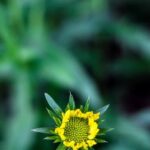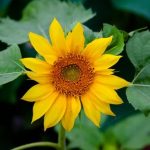Are you struggling with unsightly bald spots in your lawn? Whether it’s due to pet urine, heavy foot traffic, or other factors, there are landscaping ideas for bald spots in the lawn that can help restore your yard to its lush and green state. In this article, we will explore various strategies and techniques to address and prevent bald spots, from understanding their causes to seeking professional help for severe cases.
Bald spots in the lawn can be a source of frustration for many homeowners, but the first step in addressing them is to understand what causes them. By examining the underlying reasons for these bare patches, you can effectively implement targeted solutions that will promote healthy grass growth and prevent future issues.
Once you have a grasp of the causes of bald spots in your lawn, the next essential step is assessing the size and scope of the affected areas. This will help determine the appropriate course of action, whether it’s using grass seed for patching small areas or considering hardscaping elements and ground cover plants for larger sections. By carefully evaluating the extent of the problem, you can develop a tailored plan to rejuvenate your lawn.
Assessing the Size and Scope of the Bald Spots
Measuring the Bald Spots
The first step in addressing bald spots in your lawn is to assess their size and scope. Use a measuring tape to determine the dimensions of each bald spot, taking note of the length and width. This will help you calculate the square footage of the area that needs to be treated. By understanding the extent of the bald spots, you can better plan for the amount of grass seed, fertilizer, and other materials needed for restoration.
Identifying Underlying Issues
In addition to measuring the bald spots, it’s important to identify any underlying issues that may be contributing to their development. Examine the soil in these areas to check for compaction, poor drainage, or acidity levels that may be hampering grass growth. Also, consider factors such as excessive foot traffic or pet urine that could be causing damage. By pinpointing these underlying issues, you can address them as part of your overall landscaping approach.
Mapping Out a Plan for Restoration
After assessing the size and scope of the bald spots and identifying any underlying issues, it’s time to map out a plan for restoration. Determine whether these areas require simple overseeding or more extensive soil preparation. Consider how neighboring landscaping elements such as trees or shrubs may be impacting these areas and adjust your plan accordingly. Mapping out a clear strategy will set you on the right path towards successfully restoring your lawn to its lush and green state.
By thoroughly assessing the size and scope of bald spots in your lawn, you can take targeted steps towards addressing them effectively. Keeping an eye on these trouble areas will allow you to detect early signs of future bald spot development and take preventive action.
Choosing the Right Grass Seed for Patching
When it comes to addressing bald spots in your lawn, choosing the right grass seed for patching is crucial to achieving a lush and healthy lawn. There are several factors to consider when selecting the appropriate grass seed for your specific needs.
Consider Your Climate and Soil Type
The first step in choosing the right grass seed for patching is to consider your local climate and soil type. Different grass species thrive in different conditions, so it’s important to select a seed that is well-suited to your specific environment.
For example, if you live in a region with hot summers and mild winters, warm-season grasses like Bermuda or Zoysia may be more suitable. On the other hand, cool-season grasses such as Kentucky bluegrass or fescue are better suited for regions with cold winters and hot summers.
Match Existing Grass Species
If you already have an established lawn with a specific grass species, it’s essential to choose a grass seed that matches the existing turf. Mixing different types of grass can result in an uneven-looking lawn, so selecting a seed that complements the current turf is key to achieving a cohesive and uniform appearance.
Consider Shade Tolerance
In areas of your lawn that receive partial or full shade, it’s important to choose a grass seed blend that has good shade tolerance. Some species, such as fine fescue or certain varieties of tall fescue, perform well in shaded areas and can help fill in bald spots where sunlight is limited.
By carefully considering these factors and selecting the appropriate grass seed for patching, you can effectively address bald spots in your lawn and promote healthy, uniform growth throughout your yard. Whether you opt for warm-season or cool-season grasses or need shade-tolerant blends, choosing the right grass seed is essential for achieving a vibrant and verdant lawn.
Implementing Effective Watering Techniques
One of the most critical factors in addressing bald spots in your lawn is implementing effective watering techniques. Proper watering can make a significant difference in promoting grass growth and transforming your patchy lawn into a lush green landscape. When dealing with bald spots, it’s essential to water the affected areas consistently, ensuring that the soil remains moist but not waterlogged.
To effectively address bald spots in your lawn, consider using a sprinkler system or soaker hoses to ensure even distribution of water. Watering deeply and less frequently is also recommended as it encourages the development of deep roots, making the grass more resilient and better equipped to withstand environmental stressors.
Additionally, be mindful of the time of day you water your lawn; early morning is often considered the best time as it allows for optimal absorption before the heat of the day sets in.
Another key aspect of effective watering techniques for patchy lawns is paying attention to any existing drainage issues. Poor drainage can contribute to bald spots by creating overly wet or dry conditions that are detrimental to healthy grass growth. Addressing drainage problems may involve regrading certain areas or installing drainage systems to prevent future bald spots due to water accumulation.
Incorporating these landscaping ideas for bald spots in lawn watering methods will help foster a healthy environment for new grass seed and promote overall lawn recovery and rejuvenation. By paying close attention to watering techniques, you can take proactive steps towards achieving a greener, more uniform lawn.
Best Fertilization Practices for Promoting Lawn Growth
When dealing with bald spots in your lawn, one of the best ways to promote growth and fill in those areas is by implementing effective fertilization practices. By providing your lawn with the proper nutrients, you can encourage healthy and vigorous growth, helping to cover those unsightly bare patches. Here are some best fertilization practices to consider:
Best Fertilization Practices
- Soil Testing: Before applying any fertilizer, it’s important to conduct a soil test to determine the specific nutrient needs of your lawn. This will help you identify any deficiencies and ensure that you’re providing the right nutrients for optimal growth.
- Choose the Right Fertilizer: Once you know what your soil needs, select a high-quality fertilizer that contains the necessary nutrients, such as nitrogen, phosphorus, and potassium. Consider slow-release or organic fertilizers for a more sustainable and long-lasting approach.
- Proper Application: When applying fertilizer, make sure to follow the manufacturer’s instructions regarding timing and application rates. Over-fertilizing can do more harm than good, so it’s important to apply the right amount at the right time.
In addition to these basic fertilization practices, it’s also essential to pay attention to watering and mowing techniques that can further support lawn growth. By creating an ideal environment for your grass to thrive, you can effectively fill in those bald spots and enjoy a lusher, greener lawn.
Remember that while fertilization is an important part of promoting lawn growth and covering bald spots, it should be combined with other landscaping ideas for bald spots in lawns such as proper watering techniques and choosing the right grass seed for patching. A holistic approach will yield better results and help prevent future bald spots from developing.
Using Hardscaping Elements to Cover Bald Spots
When dealing with bald spots in your lawn, one effective landscaping solution is to use hardscaping elements to cover these areas. Hardscaping can provide an attractive and low-maintenance way to conceal any unsightly patches in your yard. Some commonly used hardscaping materials include gravel, pebbles, rocks, bricks, and pavers. These materials not only add visual interest but also serve a functional purpose by preventing soil erosion and controlling drainage.
One popular hardscaping method for covering bald spots is to create a decorative pathway or patio using pavers or bricks. This not only adds aesthetic value to your outdoor space but can also effectively cover up bare patches in the lawn. Additionally, you could consider installing decorative rock or gravel beds strategically placed throughout the affected area to create visual appeal while masking the bald spots.
It’s important to keep in mind that when utilizing hardscaping elements in your landscaping design, proper installation and maintenance are crucial for long-term success. Ensure that these elements are installed correctly and are well-integrated into the overall landscape design to create a cohesive look for your yard.
| Hardscape Material | Usage |
|---|---|
| Gravel | Effective drainage control and soil erosion prevention |
| Rocks | Decorative feature while providing coverage for bald spots |
| Pavers/Bricks | Create pathways or patios while concealing bare patches |
Creating Natural Solutions With Ground Cover Plants
One effective way to address bald spots in your lawn is to create natural solutions using ground cover plants. These low-growing, spreading plants not only fill in the empty spaces but also add visual interest to your landscape. Here are some ground cover plant options to consider:
- Creeping Thyme: This aromatic herb forms a dense mat of green foliage and produces tiny pink, purple, or white flowers in the summer.
- Creeping Jenny: With its vibrant green leaves and yellow flowers, this plant is an excellent choice for adding color to bare spots in your lawn.
- Blue Star Creeper: This fast-spreading evergreen plant features dainty blue flowers and makes a great filler for small areas with poor soil.
In addition to their aesthetic appeal, ground cover plants help prevent soil erosion, suppress weed growth, and reduce the need for mowing. When selecting ground cover plants for your lawn, consider factors such as sunlight exposure, soil type, and water requirements.
It’s important to note that ground cover plants may take some time to establish themselves and spread across the bald spots in your lawn. However, with proper care and maintenance, they can ultimately contribute to a more lush and vibrant landscape. By incorporating these natural solutions into your landscaping plan, you can effectively address bald spots while enhancing the overall beauty of your outdoor space.
Maintaining a Healthy Lawn to Prevent Future Bald Spots
There are several effective strategies for maintaining a healthy lawn to prevent future bald spots. One of the most important factors in preventing bald spots is regular, proper mowing. It’s crucial to mow your lawn at the correct height to promote healthy grass growth and prevent stress on the grass. Be sure to use sharp mower blades to avoid tearing the grass, which can lead to bald spots.
In addition to mowing, it’s essential to establish a regular watering schedule for your lawn. Proper watering techniques can help prevent bald spots by ensuring that your grass receives adequate moisture without being overwatered. Deep, infrequent watering is generally preferred over frequent, shallow watering, as it encourages deep root growth and overall lawn health.
Another key aspect of maintaining a healthy lawn is aeration. Aerating your lawn allows air, water, and nutrients to reach the grassroots, promoting strong and healthy grass growth. By reducing soil compaction through aeration, you can prevent future bald spots and promote a lush, green lawn.
| Maintaining Technique | Prevention Impact |
|---|---|
| Proper Mowing | Promotes healthy grass growth and prevents stress on the grass |
| Regular Watering Schedule | Ensures adequate moisture without overwatering |
| Aeration | Allows air, water, and nutrients to reach grassroots; reduces soil compaction |
Seeking Professional Help for Severe Bald Spots
If you have tried various landscaping ideas for bald spots in your lawn and still haven’t seen any improvement, it might be time to seek professional help. Severe bald spots in your lawn could be a sign of a more serious issue that needs the expertise of a professional landscaper or lawn care specialist. They can assess the extent of the damage and provide a tailored solution to restore your lawn to its former lushness.
Professional help for severe bald spots may involve conducting soil tests to determine if there are any underlying issues such as poor drainage, compacted soil, or pH imbalances. Once the root cause of the bald spots is identified, a professional can recommend specific treatments or amendments to address these issues and promote healthy grass growth.
In addition, seeking professional help for severe bald spots in your lawn can also involve specialized techniques such as overseeding, core aeration, or even installing new turf. These methods require professional knowledge and equipment to ensure that the new grass establishes effectively and competes with weeds. A professional can also provide ongoing maintenance tips to prevent future bald spots from occurring, ensuring that your lawn stays green and vibrant throughout the year.
Additional Tips and Tricks for a Lush, Green Lawn
In conclusion, achieving a lush, green lawn free of bald spots requires a combination of understanding the causes of the issue, making the right choices in grass seed and fertilization, and implementing effective maintenance practices. By diligently assessing the size and scope of the bald spots, selecting the appropriate grass seed for patching, and following proper watering and fertilization techniques, you can significantly improve the health and appearance of your lawn.
In addition to these fundamental steps, consider incorporating hardscaping elements such as stepping stones or decorative rocks to cover any remaining bald spots. Utilizing ground cover plants like creeping thyme or clover can also provide natural solutions that not only fill in bare areas but add visual interest to your landscape.
Finally, remember that ongoing maintenance is crucial for preventing future bald spots – regularly mowing, aerating, and dethatching your lawn will promote healthy growth and reduce the likelihood of developing new bare patches.
For homeowners dealing with severe or persistent bald spots despite their best efforts, seeking professional help from a landscaping expert may be necessary. A consultation with a professional can provide invaluable insight into potential underlying issues and offer tailored solutions to restore your lawn to its full potential. By following these tips and tricks and staying proactive in your lawn care efforts, you can create a beautiful outdoor space that you can enjoy for years to come.
Frequently Asked Questions
What Can I Put on Bald Spots on My Lawn?
Bald spots on a lawn can be addressed by using grass seed specifically suited for your region and conditions. Prepare the area by loosening the soil, applying the seed evenly, and then covering it with a thin layer of mulch or topsoil. Regular watering is crucial for promoting new growth in these bald areas.
How Do I Cover Bare Patches in My Lawn?
Bare patches in a lawn can be covered by raking the area to loosen the topsoil, then applying grass seed and gently pressing it into the soil. Water the area regularly to keep it moist while new grass grows. Applying a layer of straw or mulch can also help protect the seeds and encourage growth.
How Do I Overseed Bare Spots in My Lawn?
Overseeding bare spots in a lawn involves spreading grass seed directly over the existing turf to promote new growth in those areas. Before overseeding, mow the lawn short and rake away any debris to expose the soil. Then spread the seed evenly, water regularly, and ensure proper fertilization to encourage healthy growth in the newly seeded areas.

Welcome to my gardening blog! I am passionate about plants and enjoy sharing my knowledge and experiences with others. In this blog, I will write about everything related to gardening, from tips on how to get started to updates on my own garden projects.





